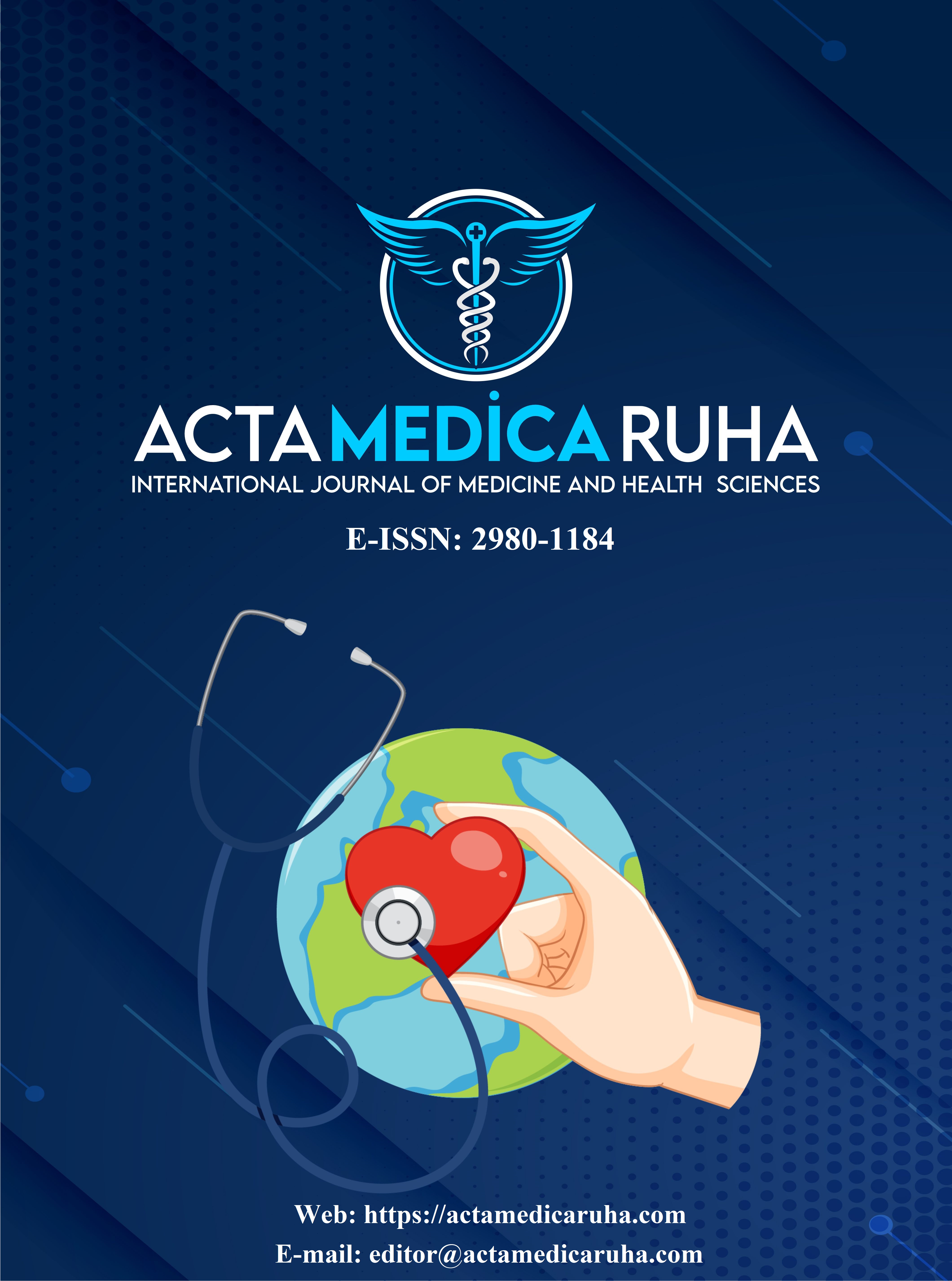Increased Number Of Encrusted D-J Stents In Our Clinic During The Covid-19 Pandemic And The Reliability Of Ureteroenoscopy (Rigid/Flexible) In Removing Encrusted D-J Stents
Research Article
DOI:
https://doi.org/10.5281/zenodo.15630886Keywords:
COVID-19, Encrusted D-J Stent, Üreteroenoscopy, holmium laser lithotripsy, EndourologyAbstract
Introduction: Stent encrustations that develop due to the D-J stent being forgotten or left in the body for a long time are one of the major causes of these side effects and complications.
Objective: To examine the effect of the coronavirus disease 2019 (COVID-19) pandemic on the frequency of encrusted (petrified) D-J (double j) stent cases treated during the pandemic and the effects of the encrusted D-J stent on our patients.
Methods: The data of 27 patients who underwent D-J stent removal due to encrusted stent between March 2019 and March 2021 were analyzed retrospectively. The age of the patients, duration of ureteral stenting, size and location of the encrustation were examined.
Results: The mean age of the patients was 46.56 ± 14.78 years. The mean length of stent stay in the body was 217.15 ± 472.08 days. The mean incrustation size was 386.96 ± 541.26 mm2. Eight of the patients had severe D-J stent incrustation, 3 had moderate D-J encrustation, and 16 had mild D-J encrustation. During the COVID-19 pandemic, there was a 200% increase in the number of cases. The encrusted D-J stents of all our patients were successfully removed via ureteroenoscopy by breaking the encrusted parts of the stents using a holmium laser, achieving complete stone removal.
Conclusion: Due to the Covid-19 pandemic, there has been a significant increase in the number of encrusted D-J stents. Ureterorenoscopy/flexible ureterorenoscopy is an effective treatment method for removing the encrusted D-J stent using holmium laser and achieving complete stone removal.
References
Zimskind PD, Fetter TR, Wilkerson JL. Clinical use of long-term indwelling silicone rubber ureteral splints inserted cystoscopically. The Journal of urology. 1967;97:840-844. doi:/10.1016/S0022-5347(17)63130-6.
Finney RP. Experience with new double J ureteral catheter stent. The Journal of urology. 2002;167:1135-1138. doi:10.1016/S0022-5347(17)57326-7.
Monga M, Klein E, Castaneda-Zuniga WR, Thomas R. The forgotten indwelling ureteral stent: a urological dilemma. The Journal of urology. 1995;153:1817-1819. doi:/10.1016/S0022-5347(01)67319-1.
Tomer N, Garden E, Small A, Palese M. Ureteral Stent Encrustation: Epidemiology, Pathophysiology, Management and Current Technology. The Journal of Urology. 2021;205:68-77. doi:/10.1097/JU.0000000000001343.
Saltzman B. Ureteral stents. Indications, variations, and complications. The Urologic clinics of North America. 1988;15:481-491. doi:/10.1016/S0094-0143(21)01594-9.
Aron M, Ansari MS, Singh I, et al. Forgotten ureteral stents causing renal failure: multimodal endourologic treatment. Journal of endourology. 2006;20:423-428. doi:/10.1089/end.2006.20.423.
Bhuva S, Kennish SJ, Wah TM. Forgotten indwelling stent in a transplanted kidney: a case report. Cases journal. 2009;2:1-4. doi:/10.1186/1757-1626-2-27.
Singh I, Gupta N, Hemal A, Aron M, Seth A, Dogra P. Severely encrusted polyurethane ureteral stents: management and analysis of potential risk factors. Urology. 2001;58:526-531. doi:10.1016/S0090-4295(01)01317-6.
Canby-Hagıno ED, Caballero RD, Harmon WJ. Intraluminal pneumatic lithotripsy for the removal of encrusted urinary catheters. The Journal of urology. 1999;162:2058-2060. doi: 10.1016/S0022-5347(05)68100-1.
Zhao LC, Weinberg AC, Lee Z, et al. Robotic ureteral reconstruction using buccal mucosa grafts: a multi-institutional experience. European urology. 2018;73:419-426. doi: 10.1016/j.eururo.2017.11.015.
Organization WH. COVID-19 weekly epidemiological update, 2 March 2021. doi: 10.24321/2349.7181.201917.
Wynants L, Van Calster B, Collins GS, et al. Prediction models for diagnosis and prognosis of covid-19: systematic review and critical appraisal. BMJ. 2020;369. doi: 10.1136/bmj.m1328.
Trypsteen W, Van Cleemput J, Snippenberg Wv, Gerlo S, Vandekerckhove L. On the whereabouts of SARS-CoV-2 in the human body: A systematic review. PLoS Pathogens. 2020;16:e1009037. doi: 10.1371/journal.ppat.1009037.
Chan VW-S, Chiu PK-F, Yee C-H, Yuan Y, Ng C-F, Teoh JY-C. A systematic review on COVID-19: urological manifestations, viral RNA detection and special considerations in urological conditions. World journal of urology. 2020:1-12. doi: 10.1007/s00345-020-03246-4.
Soytaş M, Boz MY, Güzelburç V, et al. Comparison of before and after COVID-19 urology practices of a pandemic hospital. Turkish journal of urology. 2020;46:474. doi: 10.5152/tud.2020.20230.
Haleblian G, Kijvikai K, de la Rosette J, Preminger G. Ureteral stenting and urinary stone management: a systematic review. The Journal of urology. 2008;179:424-430. doi: 10.1016/j.juro.2007.09.026.
Persky L, Lockhart JJ, Karp R, Helal M, Hakki S. The overlooked, retained Double J stent. Urology. 1990;36:519-521. doi: 10.1016/0090-4295(90)80192-P.
Borboroglu PG, Kane CJ. Current management of severely encrusted ureteral stents with a large associated stone burden. The Journal of urology. 2000;164:648-650. doi: 10.1016/S0022-5347(05)67272-2.
El-Faqih S, Shamsuddin A, Chakrabarti A, et al. Polyurethane internal ureteral stents in treatment of stone patients: morbidity related to indwelling times. The Journal of urology. 1991;146:1487-1491. doi: 10.1016/S0022-5347(17)38146-6.
Kawahara T, Ito H, Terao H, Yoshida M, Matsuzaki J. Ureteral stent encrustation, incrustation, and coloring: morbidity related to indwelling times. Journal of endourology. 2012;26:178-182. doi: 10.1089/end.2011.03.
Tunney M, Keane P, Jones D, Gorman S. Comparative assessment of ureteral stent biomaterial encrustation. Biomaterials. 1996;17:1541-1546. doi: 10.1016/0142-9612(96)89780-8.
Shabeena K, Bhargava R, Manzoor MA, Mujeeburahiman M. Characteristics of bacterial colonization after indwelling double-J ureteral stents for different time duration. Urology annals. 2018;10:71. doi: 10.4103/ua.ua_158_17.
Beysens M, Tailly TO. Ureteral stents in urolithiasis. Asian journal of urology. 2018;5:274-286. doi:10.1016/j.ajur.2018.07.002.
Gertner JM, Coustan DR, Kliger AS, Mallette LE, Ravin N, Broadus AE. Pregnancy as state of physiologic absorptive hypercalciuria. The American journal of medicine. 1986;81:451-456.
Swanson SK, Heilman RL, Eversman WG. Urinary tract stones in pregnancy. Surgical Clinics of North America. 1995;75:123-142. doi:10.1016/S0039-6109(16)46539-4.
Kroovand RL. Stones in pregnancy and in children. Wolters Kluwer Philadelphia, PA. 1992. doi: 10.1016/S0022-5347(17)36823-4.
Maikranz P, Coe FL, Parks J, Lindheimer MD. Nephrolithiasis in pregnancy. American Journal of Kidney Diseases. 1987;9:354-358. doi:10.1016/S0272-6386(87)80136-1.
Forbes C, Scotland KB, Lange D, Chew BH. Innovations in ureteral stent technology. Urologic Clinics. 2019;46:245-255. doi: 10.1016/j.ucl.2018.12.013.
Vanderbrink BA, Rastinehad AR, Ost MC, Smith AD. Encrusted urinary stents: evaluation and endourologic management. Journal of endourology. 2008;22:905-912. doi: 10.1089/end.2006.0382.
Acosta-Miranda AM, Milner J, Turk TM. The FECal Double-J: a simplified approach in the management of encrusted and retained ureteral stents. Journal of endourology. 2009;23:409-415. doi: 10.1089/end.2008.0214.
Arenas JL, Shen JK, Keheila M, et al. Kidney, ureter, and bladder (KUB): a novel grading system for encrusted ureteral stents. Urology. 2016;97:51-55. doi: 10.1016/j.urology.2016.06.050.
Manzo BO, Alarcon PS, Lozada E, et al. A Novel Visual-Grading for Ureteral Encrusted Stents Classification (V-GUES) to Help Decide the Endourologic Treatment. Journal of Endourology. 2021. doi: 10.1089/end.2020.1225.
El-Tatawy H, El-Abd AS, Gameel TA, et al. Management of ‘forgotten’encrusted JJ stents using extracorporeal shockwave lithotripsy: A single-centre experience. Arab Journal of Urology. 2019;17:132-137. doi:10.1080/2090598X.2019.1595485.
Kawahara T, Ito H, Terao H, et al. Encrusted ureteral stent retrieval using flexible ureteroscopy with a Ho: YAG laser. Case reports in medicine. 2012. doi: 10.1155/2012/862539.
Bagley DH. Expanding role of ureteroscopy and laser lithotripsy for treatment of proximal ureteral and intrarenal calculi. Current opinion in urology. 2002;12:277-280. doi:10.1097/MOU.0000000000001250.
Kirac M, Kopru B, Ergin G, Kibar Y, Biri H. Is fluoroscopy necessary during flexible ureteroscopy for the treatment of renal stones? Arab Journal of Urology. 2020;18:112-117. doi: 10.1080/2090598X.2019.1702242.
Cristallo C, Santillán D, Tobia I, Tirapegui F, Daels F, González M. Flexible ureteroscopy without ureteral access sheath. Actas Urológicas Españolas (English Edition). 2022;46:354-360. doi: 10.1016/j.acuroe.2021.12.006.
Sorokin I, Cardona-Grau DK, Rehfuss A, et al. Stone volume is best predictor of operative time required in retrograde intrarenal surgery for renal calculi: implications for surgical planning and quality improvement. Urolithiasis. 2016;44:545-550. doi: 10.1007/s00240-016-0875-8.
Joshi H, Stainthorpe A, MacDonagh R, Keeley F, Timoney A. Indwelling ureteral stents: evaluation of symptoms, quality of life and utility. The Journal of urology. 2003;169:1065-1069. doi: 10.1097/01.ju.0000048980.33855.90.
Siroky M. The aging bladder. Reviews in urology. 2004;6:S3. doi: 10.1016/s0090-4295(97)00616-x.
Chen J-L, Lee M-C, Kuo H-C. Reduction of cystometric bladder capacity and bladder compliance with time in patients with end-stage renal disease. Journal of the Formosan Medical Association. 2012;111:209-213. doi: 10.1016/j.jfma.2011.09.023.
Sancaktutar AA, Tepeler A, Söylemez H, et al. A solution for medical and legal problems arising from forgotten ureteral stents: initial results from a reminder short message service (SMS). Urological research. 2012;40:253-258. doi: 10.1007/s00240-011-0404-8.
Molina WR, Pessoa R, da Silva RD, et al. A new patient safety smartphone application for prevention of “forgotten” ureteral stents: results from a clinical pilot study in 194 patients. Patient safety in surgery. 2017;11:1-4. doi: 10.1186/s13037-017-0123-3.
Hameed BZ, Shah M, Naik N, Reddy SJ, Somani BK. Use of ureteric stent related mobile phone application (UROSTENTZ App) in COVID-19 for improving patient communication and safety: a prospective pilot study from a university hospital. Central European Journal of Urology. 2021;74:51. doi: 10.5173/ceju.2021.0328.
Downloads
Published
How to Cite
Issue
Section
License
Copyright (c) 2025 Acta Medica Ruha

This work is licensed under a Creative Commons Attribution 4.0 International License.











